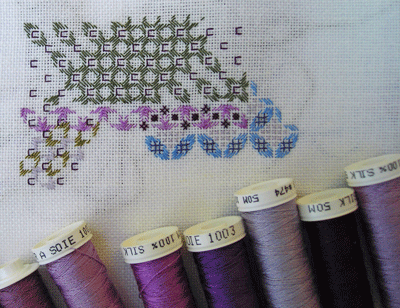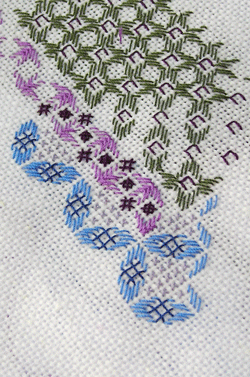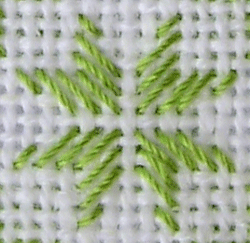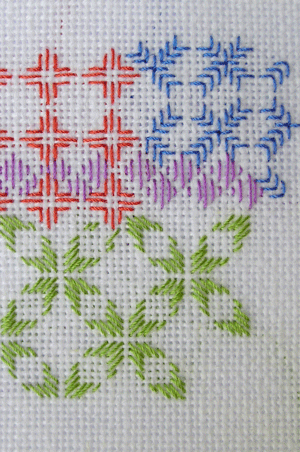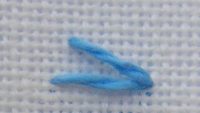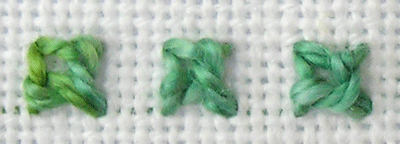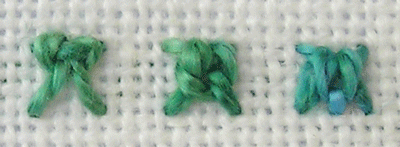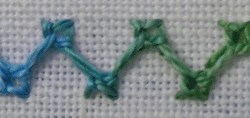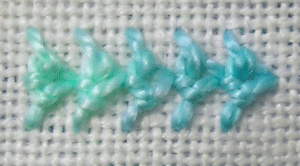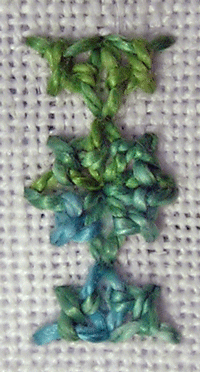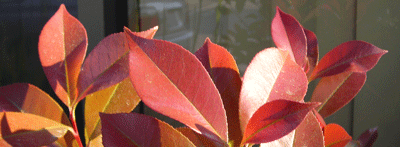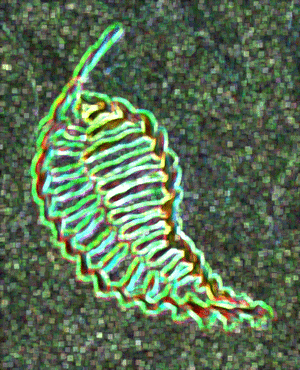A news item before the stitch:
And exciting news to me. Needlecrafter’s stitch dictionary is available again. I appreciate this one so much and have been missing it often. Many thanks to them for continuing to provide this resource. If you haven’t seen this site before a link is available on my stitch dictionary page.
I’m in school girl mode with a new-to-me stitch, the lock stitch (This link puts you on the right page to scroll down to the stitch and then click the illustration for a pop up window.). Its one of the stitches that I found while looking through a box of books that arrived a couple of weeks ago. It was in a stitch dictionary book by Anne Butler. I love the stitch and I’ve been having fun with it in between my other stitching.
The lock stitch is another stitch worked on a base of straight stitches. I was laughing to my self about how I got into exploring these stitches this year. It was all due to my January TIF design and trying to find a good stitch for table and chair legs. The locker stitch doesn’t help me there. But it is an useful stitch in its own right.
I was pleased with the lines I could make in a hurry with it and it seems ideal for a fast border. I’ve experimented a couple beads ideas, too. Photos on those should be up tomorrow.
The lock stitch is not a precise stitch. It allows for a variety of tensions on the thread. This changes the appearance of the stitch as you may note in some of today’s samples. Some tensions will not work for certain application and fabrics and threads involved may limit suitability, too. These samples were using a pima cotton thread and fairly sturdy 28 count linen. I was getting close or a little beyond the limits in some cases.
Many thanks go out to Arts and Designs for their glossary with the lock stitch.
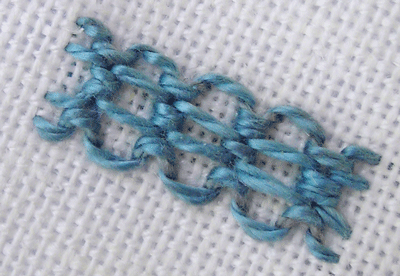
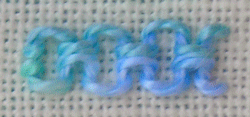
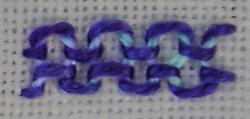





 Posted by Elizabeth
Posted by Elizabeth 

